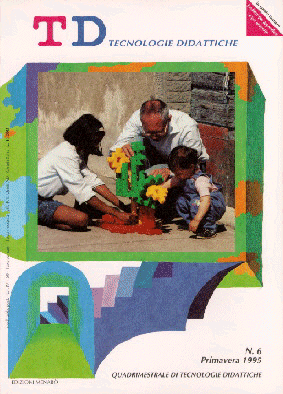The content structure in the development of courseware
Main Article Content
Abstract
Article Details
Section
Authors who publish with this journal agree to the following terms:
- Authors retain copyright and grant the journal right of first publication with the work simultaneously licensed under a Creative Commons CC BY 4.0 Attribution 4.0 International License.
- Authors are able to enter into separate, additional contractual arrangements for the non-exclusive distribution of the journal's published version of the work (e.g., post it to an institutional repository or publish it in a book), with an acknowledgement of its initial publication in this journal.
- Authors are permitted and encouraged to post their work online (e.g., in institutional repositories or on their website) prior to and during the submission process, as it can lead to productive exchanges, as well as earlier and greater citation of published work (See The Effect of Open Access)
References
Bloom B.S. (ed.) (1956), Taxonomy of Educational Objectives, David Mc Kay, New York
Ferraris M., Midoro V., Olimpo G. (1984), Petri Nets as a Modelling Tool in the Development of CAL Courseware, Computers and Education, Vol. 8, n. 1
Gagné R.M. (1973), Le condizioni dell’apprendimento, Armando editore, Roma
Gagné R.M. (1985), The conditions of learning (4° Edizione), CBS College Publishing, New York
Jantzen, M. (1980), Structural Representation of Knowledge by Petri Nets as an Aid for Teaching and Research,in: Net Theory and Applications, Springer-Verlag, Berlino
Jones M.K., Li Z., Merril M.D. (1990), Domain Knowledge Representation for Instructional Analysis, Educational Technology
Landa L. (1974), Algoorithmization in Learning and Instruction, Prentice Hall, Englewood Cliffs
Merril M.D. (1983), Component Display Theory, in Reigeluth C.M. (ed.), Instructional Design Theories and Models, Lawrence Erlbaum, Hillsdale
Olimpo G. (1986), The Computer in the Evaluation of Learning, in: Designing Computer Based Learning Material, Springer-Verlag, Berlino
Pask G. (1976), Conversation Theory Applications in Education and Epistemology, Elsevier, Amsterdam
Trentin G. (1992), Case study: Supporting the Structuring of Personal Knowledge with Computers, Educational & Training Technology International, Vol. 29, n. 4

